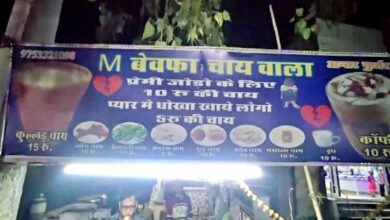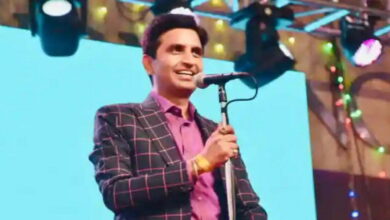Use of Maha Vikas Aghadi

With the resignation of Uddhav Thackeray, can it be considered that the Maha Vikas Aghadi experiment has failed? If this experiment is seen only from the point of view that after the assembly elections, three parties came together and formed the government which fell after running for two and a half years, then it would seem that this experiment has failed. But apart from the formation and fall of the government, if it is assessed from a political point of view, then it cannot be called a failure from any aspect. So, first of all, it has to be assessed keeping in mind the wider political scenario. Second, it will also have to be assessed from the point of view of whether this was the first or only experiment in which parties of completely different ideologies came together or parties contesting against each other formed a post-poll coalition to form a government. ?
In this sense it was not a new experiment. BJP leaders may call it a betrayal of the mandate, but it is a theory fabricated by the BJP for its own convenience. In fact, the ‘Coalition of Extreme’ means the alliance of parties standing on two different poles is not a new thing in Indian politics. After all, the BJP supported Vishwanath Pratap Singh’s government in alliance with the Left parties. In Bihar, Nitish Kumar had formed his party as an anti-thesis of Lalu Prasad’s party RJD, but at one time he aligned with the same party. The BJP itself formed the government in Maharashtra in 2014 with the help of NCP, opposing which it contested the elections. In the same year, the BJP formed the People’s Democratic Party government in Jammu and Kashmir, while the BJP contested the elections by calling that party anti-national and supporter of separatists. So, ‘Coalition of Extreme’ is nothing new and it was not the last experiment of that kind. Such experiments will continue in future also. In fact, from this point of view, it will look like an immediate political experiment, aimed at forming a government. So, this experiment needs to be looked at from many different perspectives.
First of all, it was an experiment of a hardline communal and regionalist party to enter mainstream politics. Shiv Sena was started with the opposition of South Indians. Bal Thackeray started with the slogan ‘Bajao pungi hatao lungi’. Madras was not named Chennai then. At that time there was a movement to remove the Madrasis from Mumbai. Shiv Sena then entered into hardcore Hindutva politics, when Bal Thackeray said with a chest that his Shiv Sainiks demolished the mosque in Ayodhya. Its immediate advantage was that in the very next election in 1995, Shiv Sena and BJP came to power in Maharashtra for the first time. At the same time, the Shiv Sena started opposing the North Indians under the politics of Marathi Manush. But this form of Shiv Sena changed as soon as Maha Vikas Aghadi joined the experiment. She kept taking the credit for Ayodhya but she incorporated all the elements of mainstream politics in her politics. Uddhav Thackeray started inclusive politics. He took concrete initiatives to reduce the feeling of hatred towards Muslims, South Indians and North Indians. Uddhav Thackeray did the kind of civilized, cultured and inclusive politics that should have happened in the financial capital of the country. This was a big change.
Shiv Sena also has a broader perspective of transforming it from a staunch Hinduwadi party to an inclusive one. Keep in mind that apart from BJP, Shiv Sena is the only big party doing Hindutva politics in this country. There are some other small organizations. Like Hindu Mahasabha still exists or Hindu Yuva Vahini formed by Shri Ram Sene in Karnataka and Yogi Adityanath in some areas of North India works. But their political existence is nothing. So, the only big party doing Hindu politics other than BJP and Sangh organizations is Shiv Sena, which has been transformed. Shiv Sena has openly accused the BJP of doing divisive politics and has presented a model of doing politics outside the BJP while talking about Hindu interests. There are two aspects to this change. Firstly, BJP is now the only party doing RSS brand politics. So, he will get the benefit of his position. But the flip side is that the rejuvenation of Shiv Sena also creates an opportunity to isolate the BJP.
Shiv Sena kept the BJP away from the power of the country’s richest state for two and a half years by collaborating with two opposite minded parties, then a big message has also gone to the other parties of the country, especially the allies of the BJP. Shiv Sena has shown that BJP may be an almighty party but it can be challenged by standing in front of it. He can be kept out of power. The Shiv Sena also showed that the BJP can be fought despite the actions of all the central agencies. Keep in mind that action of central agencies is going on against a dozen leaders of Shiv Sena. Despite this, he did not surrender to the BJP. Today, if Chief Minister Nitish Kumar, who is running the government with the support of BJP in Bihar, and his party are showing a stance to the BJP, then one of the reasons for this is also the experiment of Maha Vikas Aghadi in Maharashtra.
One of the major gains of this experiment is that the BJP’s love of power and the mindset of doing anything to gain power has become more evident than the measures taken by the BJP to make it fail. Due to this BJP has exposed something else. She was also exposed to the developments in Madhya Pradesh and Karnataka but the case of Maharashtra and Shiv Sena is a bit different. In Maharashtra, the BJP had administered oath to its Chief Minister and NCP leader as Deputy Chief Minister in the dark to form its government. Starting from there, till the Shiv Sena uprising and hiding the MLAs in three BJP ruled states- Gujarat, Assam and Goa, whatever happened, the BJP’s honest and value-oriented party has taken off the mask of the party. Even his staunch supporters believe that this operation must have cost a lot. Although they are justifying it by saying that everything is fair in politics, but they have come to know the reality. So, this experiment cannot be called a failure. Even though the government of Maha Vikas Aghadi could not run for five years, many big goals have been achieved or concrete initiatives have been taken in that direction. If the Shiv Sena continues the politics that it is doing now, then it will be a great success for the Maha Vikas Aghadi experiment.






